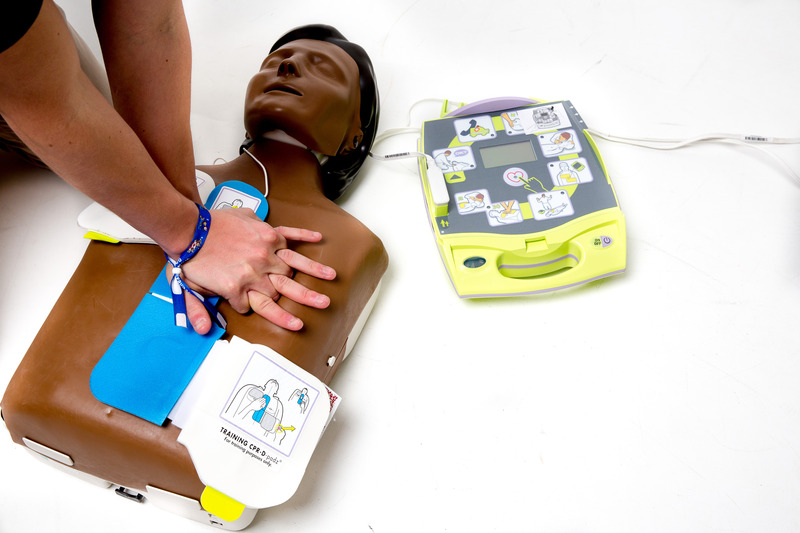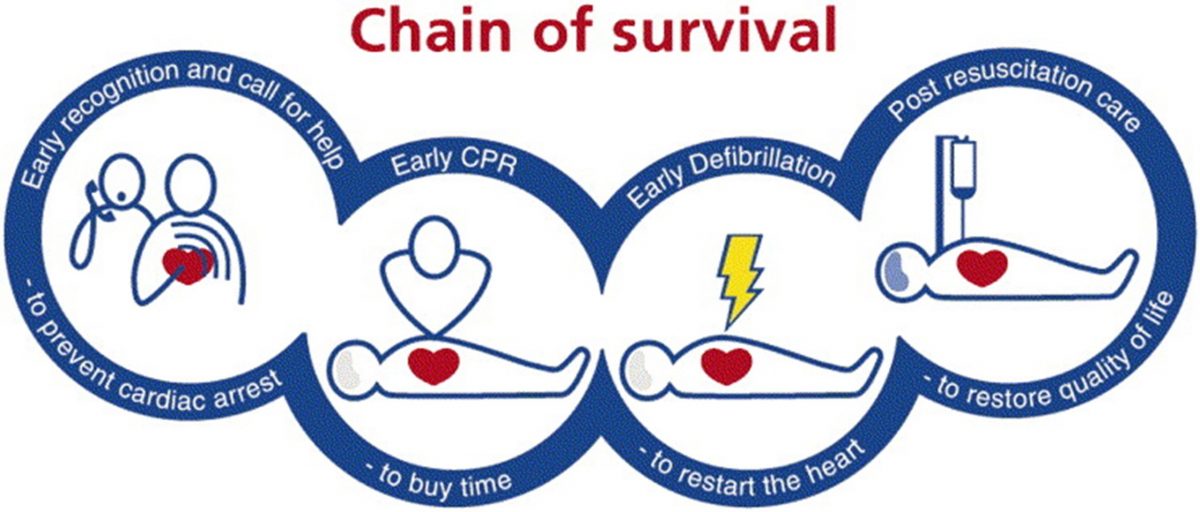Would You Recognise Someone In Cardiac Arrest?
In 1997, my Dad suffered his first Cardiac Arrest whilst watching Coventry City Football Club (cue team-related mickey-taking). If it wasn’t for the actions of members of the crowd on that day, he still wouldn’t be here 14 years later. Would you be able to recognise someone in Cardiac Arrest and know what to do?
With more than 30,000 out of hospital cardiac arrests every year (BHF UK Jan 21) and survival rates being around 1 in 10, knowing what to do can make all the difference. In some cases, CPR can double the chances of survival from out of hospital cardiac arrest.
When someone has a cardiac arrest, it usually happens without warning, they will collapse, become unresponsive and won’t be breathing normally; and it is now that the clock starts ticking. For every minute a person who is in cardiac arrest does not receive CPR or defibrillation, their chances of survival decrease by 10%. Given that Ambulances aim to get to a patient in cardiac arrest at the very latest within 8 minutes (although this is often a lot sooner) doing nothing gives them very little to work with.
What To Do
- Once you recognise someone is in Cardiac Arrest call for help immediately. Dial 999 or 112 from your phone, put it in hands-free mode, and answer the questions you are asked. If there are bystanders around, send one to get a defibrillator.
- A public access defibrillator may be in a locked cabinet, simply give the cabinet identification code to the ambulance service and they will provide the PIN to open it.
- Perform chest compressions.
-
- Locate the centre of the person’s chest and using both hands, locking out your arms push down hard to compress the chest to a depth of 5-6cm. Allow the chest to come back up, and do this again.
- Keep repeating this at a rate of 100-120 beats per minute.
- After 30 compressions, if you are able and willing, give two rescue breaths. Pinch the person’s nose, tilt their head back, form a tight seal around their lips with yours and blow into their mouth twice, then continue compressing the chest as before.
(With COVID-19 it is currently advised that the breathing steps of CPR are not undertaken and that a loose cloth should be placed over the patients head to minimise infection risks.)

Using a Defibrillator 
- When the defibrillator arrives, turn the machine on and follow the instructions.
- It is estimated that public access defibrillators are used in less than 5 percent of out of hospital cardiac arrests, however, figures produced by London Ambulance Service in January 2020 show that when used, survival rates increase to 57.1 percent.
- Do not be afraid to use it, you cannot shock someone who does not need to be shocked.
CPR On Women
Figures show that there is a gender disparity in receiving CPR; research published in 2019, led by cardiologist Dr Hanno Tan at the University of Amsterdam, found that only 68% of women are likely to receive bystander CPR compared to 73% of men. Research by a number of different universities that predate this report also identified the same trend; with reasons being listed as fear of being accused of sexual assault, fear of injuring the patient or simply not recognising the signs that a female is in cardiac arrest.
However, it’s important to remember that when someone suffers cardiac arrest, their heart suddenly stops beating properly. They are essentially dead and it is not possible to cause further harm by performing CPR or using an AED nor would you be doing something taboo. The worst you can do is nothing.
So whether you are watching the Sky Blues play or out for a walk with the family, if you recognise the signs, don’t delay remember the chain of survival.
If you would like to become a certified First Aider, get in touch with WA Management to book into an expert and affordable Emergency First Aid training course! We also have our affordable and easily accessible CPR Essentials Online Training course that provides the basic knowledge required to perform CPR.
By Neil Ward, Training Consultant at WA Management




